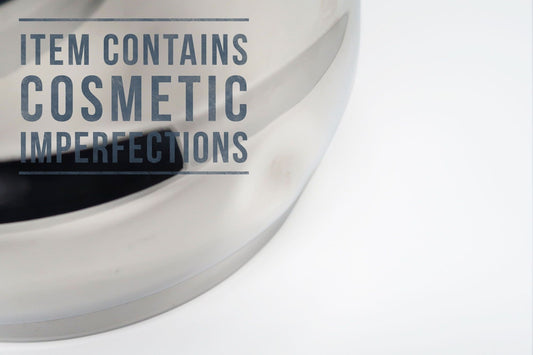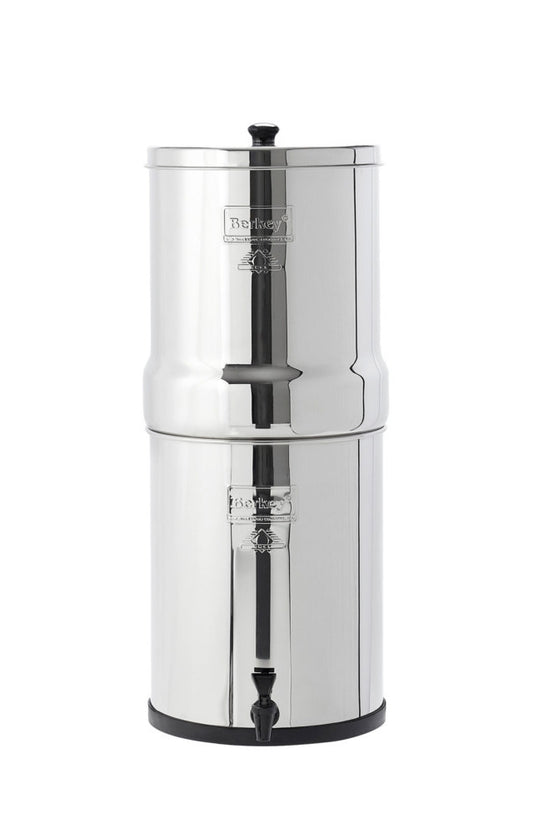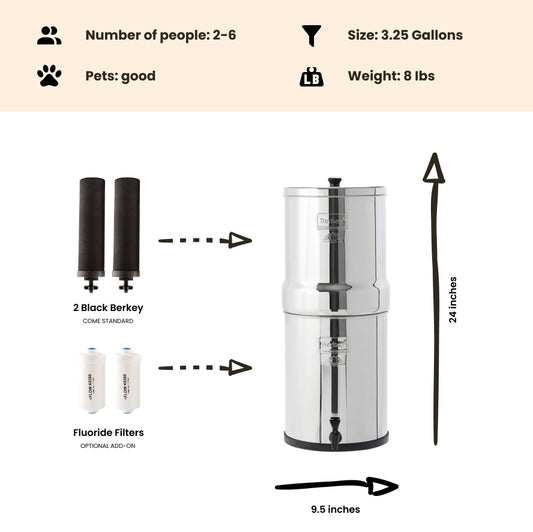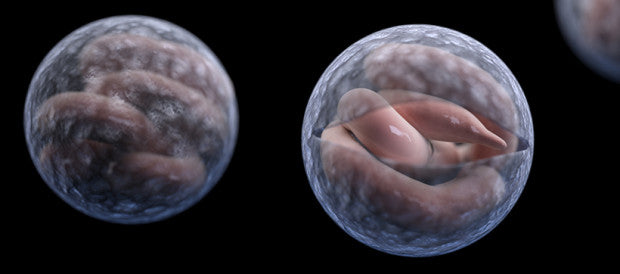
Cryptic Parasite Lurks in Minnesota Groundwater
By Dan DeBaunShare
The Cryptosporidium parasite, responsible for millions of diarrhea cases and tens of thousands of deaths, most of whom are young children, is one of the more common causes of gastrointestinal disease worldwide. Doctors can only offer treatment that addressed dehydration in those infected as unlike other causes of gastrointestinal disease, there are currently no vaccines available to prevent infection, nor are there any drugs available to kill the parasite in infected patients.
Note: The Berkey water filter equipped with our Black Berkey filters that come standard, will remove Cryptosporidium to levels greater than 99.99999% from the water.
The Cryptosporidium parasite undergoes a complex lifecycle, which includes a hardy, spore-like oocyst stage, where it is particularly difficult to eradicate with bleach, chlorine or other sanitation measures typically employed to maintain good water quality.
Consequently, water-borne Cryptosporidium outbreaks are common in first world countries, including the US, even though they have disinfection measures in place. In 1993, 400,000 people from Milwaukee developed stomach cramps, diarrhea and fever as a result of a malfunction in a water purification facility allowed the parasite to enter the city's water supply. Dozens of smaller cryptosporidium outbreaks are reported annually throughout the US, many of which occur at water parks and public swimming pools.
The diarrhea that this parasite is responsible for can last several weeks, which can be miserable for a normally healthy person and life-threatening for a malnourished child or a person with a compromised immune system.
Now, a team of researchers led by Mark Borchardt together with colleagues from the U.S. Department of Agriculture-Agricultural Research Service, as well as scientists from the Minnesota Department of Health and the U.S. Geological Survey, who were curious as to whether Cryptosporidium parasites could be detected in public water wells influenced by surface water at varying degrees, have found low levels of the parasite is around 40% of sampled wells supplying public water systems across Minnesota, including wells that are not replenished with surface water.
This is of concern as Cryptosporidium outbreaks linked to contaminated drinking water have usually been associated with contaminated surface waters (e.g. rivers and lakes) that have become contaminated as a result of livestock runoff or sewage discharges. Water from deep underground aquifers was believed to be less vulnerable to contamination by Cryptosporidium as the parasite oocysts can be filtered out by the layers of sediment and soil that lie between the surface and the underlying aquifers. The EPA requires that surface water sources used to supply drinking water must be monitored and treated for Cryptosporidium, however groundwater sources are exempt from these precautionary regulations unless the wells are known to be influenced by surface waters.
For the study, which was recently published in the American Chemical Society's journal Environmental Science & Technology, the scientists collected water samples from 145 wells that serve public water systems in Minnesota over a period of two years. The team used a sensitive genetic technique known as quantitative polymerase chain reaction (qPCR) to detect Cryptosporidium DNA in the water samples. They discovered that 40% of the well water samples tested positive for the Cryptosporidium parasite at least once, and 15% tested positive for the parasite more than once. The parasite was also detected in some wells using the standard microscope observational method.
While the team acknowledges that they are uncertain whether the levels of contamination are sufficient enough to present a health concern, the prevalence and concentration levels of the parasite in groundwater samples monitored were similar, regardless of whether wells were infiltrated by surface water or not. The study's findings suggest that the overlying soil may not adequately filter out Cryptosporidium cysts to prevent them from contaminating groundwater. Consequently, the researcher's recommend that "monitoring and treatment measures should be considered for groundwater-supplied public water systems." The authors suggest that further studies are required to get a clearer understanding as to how the parasite gets into the deep underground well water, and also to determine if there are any potential public health risks associated with this contamination.
Journal Reference
Joel P. Stokdyk, Susan K. Spencer, James F. Walsh, Jane R. de Lambert, Aaron D. Firnstahl, Anita C. Anderson, Lih-in W. Rezania, and Mark A. Borchardt. Cryptosporidium Incidence and Surface Water Influence of Groundwater Supplying Public Water Systems in Minnesota, USA. Environmental Science & Technology 2019 53 (7), 3391-3398; DOI: 10.1021/acs.est.8b05446
-
Regular price From $302.00 USDRegular priceUnit price / per
-
Regular price $234.00 USDRegular priceUnit price / per
-
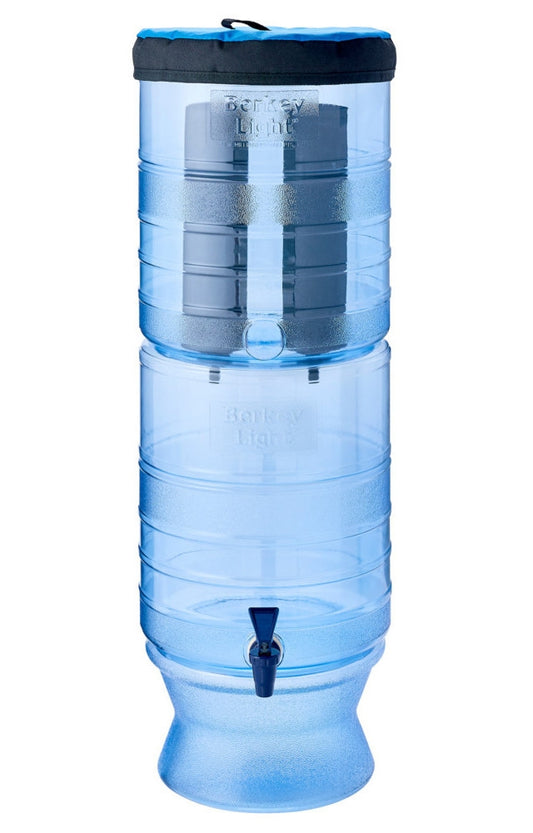
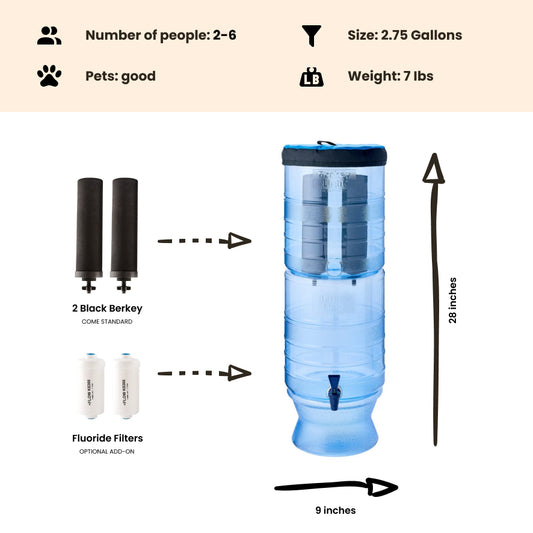 Sold outRegular price From $305.00 USDRegular priceUnit price / per
Sold outRegular price From $305.00 USDRegular priceUnit price / per -
Regular price $327.00 USDRegular priceUnit price / per
-

 Sold outRegular price From $367.00 USDRegular priceUnit price / per
Sold outRegular price From $367.00 USDRegular priceUnit price / per -
Regular price From $408.00 USDRegular priceUnit price / per
-
Regular price From $451.00 USDRegular priceUnit price / per

Dan DeBaun
Dan DeBaun is the owner and operator of Big Berkey Water Filters. Prior to Berkey, Dan was an asset manager for a major telecommunications company. He graduated from Rutgers with an undergraduate degree in industrial engineering, followed by an MBA in finance from Rutgers as well. Dan enjoys biohacking, exercising, meditation, beach life, and spending time with family and friends.
~ The Owner of Big Berkey Water Filters




